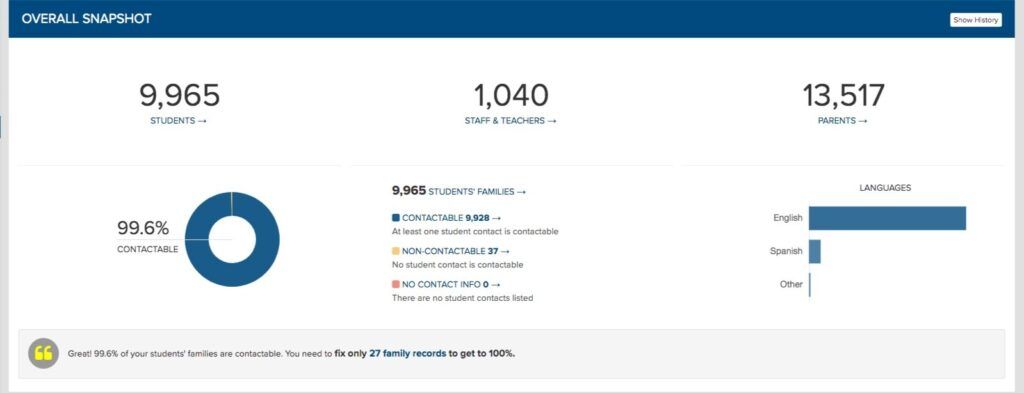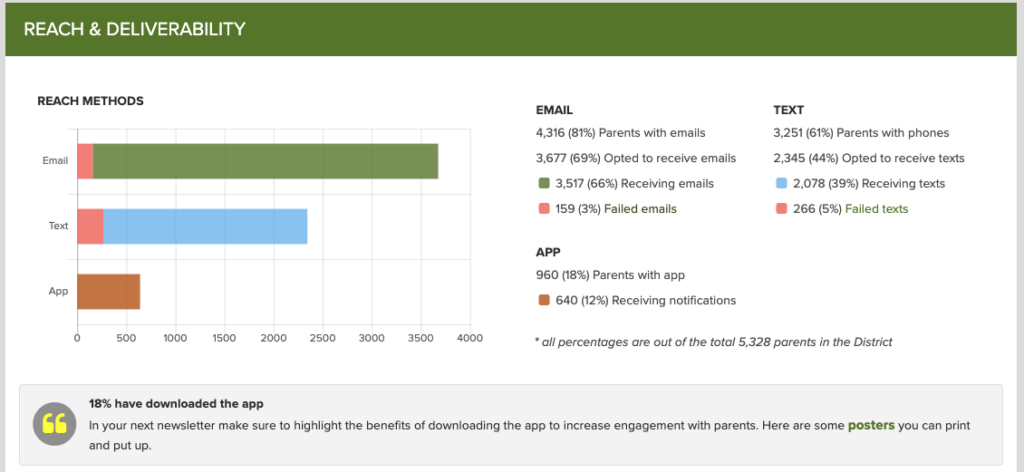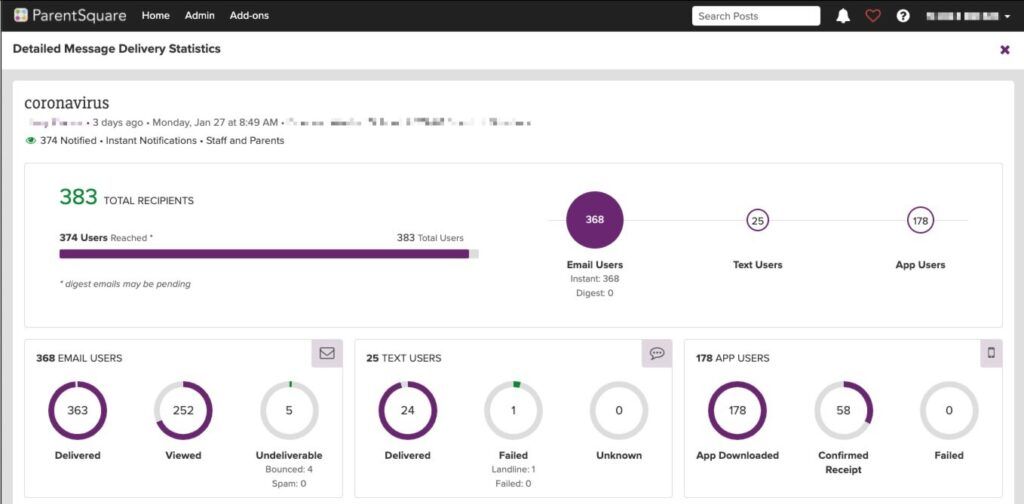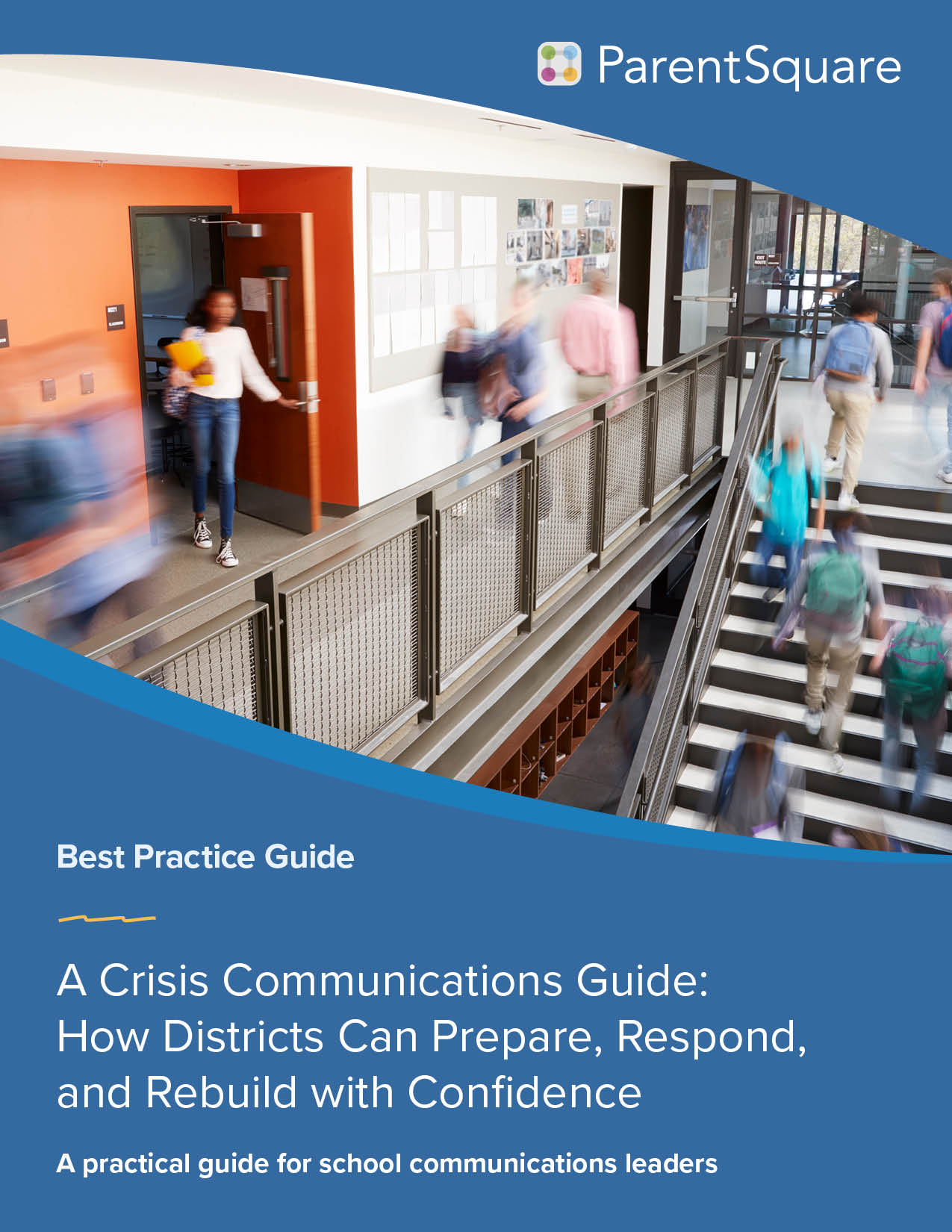Written by Jennifer Dunn and Paula Cassin
We know that every school and district we work with is committed to engaging their parents and families — it’s no secret that a strong school-home connection leads to student success!
But how should you measure your parent engagement efforts? Measuring and tracking what you’re doing school-wide is key, if you want to maintain or improve healthy, ongoing connections with everyone — including hard-to-reach families, non-English speaking families, and incoming families.

Here are 5 questions you should be able to answer, in order to measure how well your current parent engagement strategies are working — and how to improve them.
-
Are Parents Contactable?
-
How are Parents Connected?
-
Are Parents Listening?
-
Are Parents Interacting?
-
Are Parents Satisfied?
Below, we explore the first 3 questions. (Check out the answers to 4 and 5 in Part II here!)
1. Are Parents and Families in Your District Contactable?
Let’s start with the foundation: contactability! So many of us forget to track and monitor this critical metric! After onboarding thousands of schools and districts, we know that districts using their SIS with legacy messaging tools usually have invalid contact details for 5-10% of recipient parents. Emergency contact information collected on paper is associated with an even higher rate of unusable phone numbers and email addresses.
This means hundreds of parents or guardians are missing every text, email and voicemail you send!
For K12 schools focused on equitable access and engaging all families, this is a big problem.
Suggested Action
Have a look at the data you have available, and set up dashboards or realtime reports that tell you:
-
How many student families are contactable/not contactable through at least one channel?
-
How many students have valid contact details for two or more parents or guardians?
-
How many are contactable by text or voice message in case of emergency?
If you don’t have access to real-time reports and metrics, try to conduct a quarterly or monthly audit!
How this works in ParentSquare
Using ParentSquare to flag bad contact data, districts can achieve parent contactability of 97-100%, increase the number of contacts per family, and increase the number of people contactable by email and text (not just phone and snail-mail).

As soon as districts send their first message in ParentSquare, the district sees which parents need correct data (in dashboard form!) as shown in the screenshot above. Districts also get a report providing the data needed to review and fix invalid phone numbers, failed text messages and bounced emails.
You can review contactability data over time to see the impact of your efforts to correct student SIS records, and gauge if your team’s efforts are working:

2. How are Parents and Families Connected?
You probably have multiple channels of communication like email, emergency notifications, text messaging, classroom apps, maybe a district-wide app, back to school nights, parent-teacher conferences, voice messaging, etc.
What is your reach on each channel? Which channel is most popular? If you don’t track and measure, there’s no way to know and no way to improve.
It’s worth the effort to find out how many parents use available channels, to determine the best channel mix going forward. Odds are you will not use just one! Do you offer parents different ways to connect that align with their existing behavior, while keeping complexity low?
Suggested Action
List out all the channels your district or school uses and set up a process to regularly capture reports to see how parents are connected to you. Again, if you don’t have access to real-time reports and metrics, try to conduct a quarterly or monthly audit!
How This Works in ParentSquare
ParentSquare tracks Reach and Deliverability of messages, giving district leaders insight into who has chosen to receive your communications through email, text, or the secure ParentSquare app. You’ll have access to the information you need to optimize communication with your community, like which communication channel has the highest uptake, as shown below.

You can also view the Deliverability History from previous months, which will help you measure changes over time, as shown below.

3. Are They Listening? Are They Viewing What You Send?
For digital communications, the logical next measurement to track is whether parents and families actually see or hear your messages!
Did parents actually see the Family Science Night event details? Did they actually open or click on what you sent? (Should we send a reminder or not, and where should we send it?)
To create a culture that supports high parent engagement, everyone from classroom teachers to district staff should be able to gauge how successful their message was in connecting with the intended audience.
Suggested Action
Add to your metrics dashboard data about your email, voice, posts, etc. — track open, view and click-through rates. If it’s too complicated and costly to track all messages, see if you can capture averages for each platform you use. Understanding what a normal open or click-through rate is, gives you a benchmark you can use moving forward to improve.
How This Works in ParentSquare
For those using the ParentSquare platform, you can monitor the performance of every message sent:

You’ll also have access to a sortable list of recipient parents that display their preferred notification method for your message, along with their “viewed” status.

Whew! That’s enough for now. But there’s more to say — next we’ll explore parent interactions and satisfaction. Look out for Part 2 in two weeks.
(When you sign up for a live platform walk-through, let us know if you’d like to hear more about dashboards and reporting!)

